Within the Alienist books, many prominent academics, politicians, lawyers, and society figures from the 1890s are included as characters in the books. Included here is basic information on a small selection of the real people behind the characters.
Prominent Figures in the Books
Boas, Franz
Birth Date: July 9, 1858
Birth Place: Minden, North Rhine-Westphalia, Germany
Died: December 22, 1942
Profession: Anthropologist
Spouse: Marie Boas
Children: Three children; Helene Boas, Gertrude Boas, Ernst Boas.
Franz Boas attended University at both Heidelberg and Bonn studying mathematics and physics. He went on to complete his PhD in physics at the University at Kiel. He then became interested in “psychophysics” which addressed psychological and epistemological problems in physics. Prompted by this interest, he went to Baffin Island in 1883 to conduct geographic research on the impact of the physical environment on native (Inuit) migrations. Over the following years, he studied evolution, philosophy, and eventually anthropology. In the late 1800s, he emigrated to the United States where he worked at the Field Museum in Chicago, was the assistant Curator of Ethnology and Somatology of the American Museum of Natural History, and later went on to lecture at Columbia University as a Professor of Anthropology. He is now considered the “father of anthropology”.
Darrow, Clarence
Birth Date: April 18, 1857
Birth Place: Kinsman, OH, USA
Died: March 13, 1938
Profession: Attorney
Spouse: Jessie Ohl (1st wife), Ruby Hammerstrom (2nd wife)
Children: One son, Paul Edward Darrow.
Clarence Darrow first entered law in Youngstown, Ohio, and quickly moved to Chicago where he became a corporations lawyer for the railroad company. He then resigned his position in order to defend Eugene V. Debs in 1894. From then on, he primarily took on murder cases; some of his famous trials included defense of the MacNamara Brothers, the Leopold-Loeb case, and the Massie Trial. In more than 100 murder cases that he took on, he only lost one. He also participated in other famous trials including the Scopes Trial.
Meyer, Adolf
Birth Date: September 13, 1866
Birth Place: Niederweningen, Z¸rich, Switzerland
Died: March 17, 1950
Profession: Psychatrist
Spouse: Mary Potter Brooks Meyer
Children: One daughter, Julia Lathrop Meyer.
Adolf Meyer emigrated to the United States in 1892 after receiving his medical degree at the University of Zurich. Between 1893 and 1901, he took up positions at the University of Chicago, the Eastern Hospital for the Insane in Illinois, the Worcester State Hospital for the Insane, and Clark University. In 1902, he then became the Director of the Pathological Institute of the New York State Hospitals. Later in 1908, he took the position of Professor of Psychiatry and Director of the Henry Phipps Psychiatric Clinic at the John Hopkins Medical School and he stayed on at John Hopkins until 1941 when he retired. During his career, he became the first American psychiatrist to compile case histories of his patients, he developed different integrative methods of diagnosis and treatment, and he conducted large amounts of research in the fields of psychiatry, neuroanatomy, and neuropathology. He was also involved in co-founding the ‘mental hygiene movement’ along with other notable psychologists such as William James.
Morgan, John Pierpont
Birth Date: April 17, 1837
Birth Place: Hartford, CT, USA
Died: March 31, 1913
Profession: Businessman
Spouse: Amelia Sturges (1st wife), Frances Louise Tracy (2nd wife)
Children: Four children to his second wife; Louisa Pierpont Morgan, Jack Pierpont Morgan, Juliet Morgan, and Anne Morgan.
After attending a variety of schools to gain a strong understanding of mathematics, Morgan went to Bellerive, Switzerland before going onto the University of Gottingen. After this, Pierpont worked for his father’s London banking branch in 1856 prior to moving to New York to work in another banking house. In the 1860s, he went back to working for his father’s firm in New York as J. Pierpont Morgan & Company. During his career, he managed numerous successful business mergers. Those of most note include his merger of two electric companies to develop General Electric and his merger of several steel and iron businesses to form the United States Steel Corporation. Pierpont’s career resulted in him becoming so wealthy that in the Panic of 1893, he was able to lend the US Treasury $65 million in gold. Pierpont continued his successful career well into the 20th century, controlling assets worth approximately $1.3 billion. Morgan was also equally well-known for his physical appearance. He had rosacea, a skin disease, on his nose and due to this, he intensely disliked getting photographed and all his portraits were altered.
Roosevelt, Theodore
Birth Date: October 17, 1858
Birth Place: New York City, NY, USA
Died: January 6, 1919
Profession: Politician
Spouse: Alice Hathaway Lee Roosevelt (1st wife), Edith Kermit Carow Roosevelt (2nd wife)
Children: One child to his first wife, Alice Lee Roosevelt. Five children to his second wife; Theodore Roosevelt Jr., Kermit Roosevelt, Ethel Carow Roosevelt, Archibald Bulloch Roosevelt, Quentin Roosevelt.
Theodore Roosevelt graduated from Harvard University in 1880 and went on to join the Republican Party. The following year, he was elected to New York State Assembly from New York City. Over the years, he also held offices as a deputy sheriff in the Dakota Territory, the Police Commissioner of New York City, the Assistant Secretary of the Navy, the Colonel of the Rough Riders, the US Civil Service Commissioner, the Governor of New York, the Vice President of the United States, and lastly (and perhaps most importantly) the twenty-sixth President of the United States. He founded the National Collegiate Athletic Association, the Long Island Bird Club, and the Boone and Crocket Club. He also won the Nobel Peace Prize in 1906 for his mediation of the Russo-Japanese War. In addition to all of these great achievements, he was also a historian, a naturalist, a rancher, a writer of over thirty-five books, and the devoted father of six children.
Stanton, Elizabeth Cady
Birth Date: November 12, 1815
Birth Place: Johnstown, NY, USA
Died: October 26, 1902
Profession: Social Activist
Spouse: Henry Brewster Stanton
Children: Seven children; Daniel Cady Stanton, Henry Brewster Stanton Jr., Gerrit Smith Stanton, Theodore Weld Stanton, Margaret Livingston Stanton Lawrence, Harriot Eaton Stanton Blatch, and Robert Livingston Stanton.
Elizabeth had an unusual yet privileged upbringing for a girl born into the early 19th century. Her father was a Judge and in addition to having access to his law library and debating legal issues with his clerks, she was formally educated until the age of 16 in a co-educational school before going on to attend the Troy Female Seminary. In addition to this, her family’s neighbour, Rev. Simon Hosack, taught her Greek and encouraged her to read widely. After completing her education, she married Henry Brewster Stanton, who was a journalist and an anti-slavery agent; after marriage, he would also become an attorney. In addition to being a mother of seven, like her husband she was also an abolitionist and later became a figure head for the women’s rights and suffrage movement. Her particular interests in women’s rights included “women’s parental and custody rights, property rights, employment and income rights, divorce laws, the economic health of the family, and abortion” (Ref). Unable to lecture due to her family responsibilities, Elizabeth spent much of her time working with Susan B. Anthony, an unmarried teacher, to write speeches that Susan would deliver at women’s rights conventions.
Vanderbilt II, Cornelius
Birth Date: November 27, 1843
Birth Place: Unknown
Died: September 12, 1899
Profession: Businessman
Spouse: Alice Claypoole Gwynne Vanderbilt
Children: Six children; William Henry Vanderbilt, Cornelius Vanderbilt III, Alfred Gwynne Vanderbilt, Reginald Claypoole Vanderbilt, Gertrude Vanderbilt Whitney, and Countess Gladys Vanderbilt Szechenyi.
Cornelius Vanderbilt II was the son of William Henry Vanderbilt and the favourite grandson of Cornelius Vanderbilt, of whom he inherited $70 million and $500,000, respectively. In addition, he became the president and chairman of the New York Central Railroad and 49 other railway lines in 1885. He was known to be a workaholic, serious, and pious who gave to charities ñ in fact, upon his death, it was found that his charity donations had been so large that he had not increased the fortune he had inherited from his father and grandfather. In this vein, he also served on the board of the St. Luke’s Hospital, the General Theological Seminary, and the New York YMCA. In addition to charity, Cornelius also spent freely on Fifth Avenue mansions that he and his family occupied along with his Rhode Island summer home, The Breakers, in Newport.
Wissler, Clark
Birth Date: September 18, 1870
Birth Place: Hagerstown, IN, USA
Died: August 25, 1947
Profession: Anthropologist and Psychologist
Spouse: Unknown
Children: Unknown
Clark Wissler completed both his Bachelors and Masters Degrees within psychology at Indiana University in 1897 and 1899, respectively. After completing these degrees, he went on to complete his PhD in psychology at Columbia University in 1901. While at Columbia, he developed an interest in anthropology after hearing a lecture taught partially by Franz Boas. In response to this in 1902, Wissler took up an assistant position at the American Museum of Natural History where he worked under the leadership of Boas. After Franz gave up his position as Curator of Ethnology, Wissler overtook his position until he retired 40 years later. He was particularly interested in North American ethnology, focusing on the Plains Indians. Over the years, Wissler published several important works including North American Indians of the Plains (1912), The American Indian (1917), Man and Culture (1923), The Relation of Nature to Man in Aboriginal America (1926), Indian Cavalcade (1938), and Indians of the United States (1940).

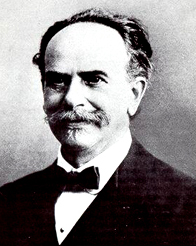
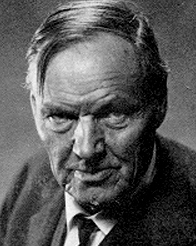
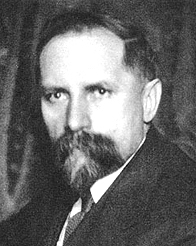
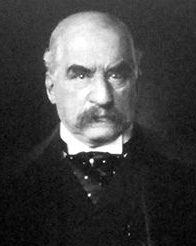
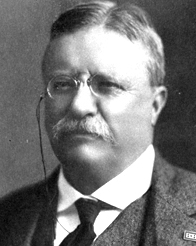
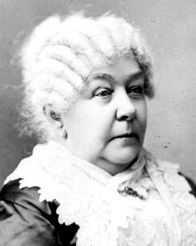
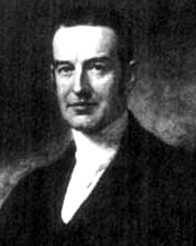
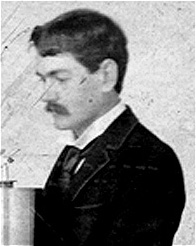
It’s my understanding that Cornelius Vanderbilt II was born on Staten Island.